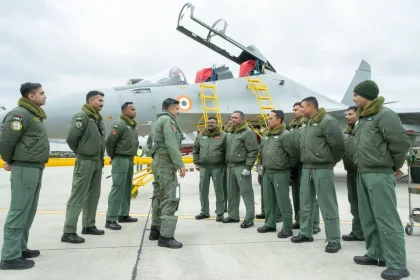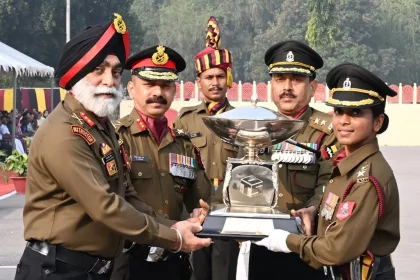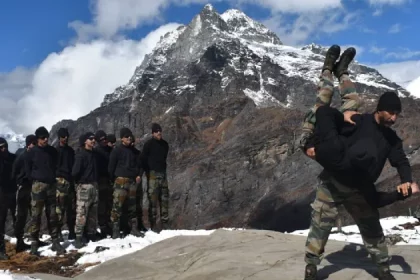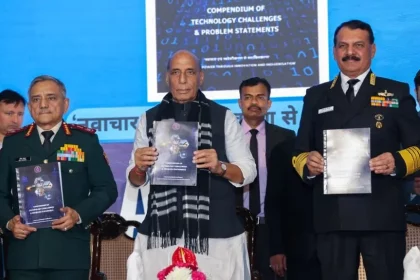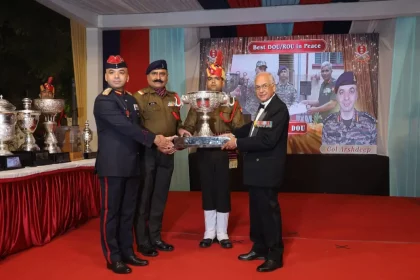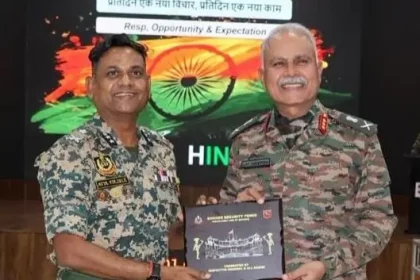Indian and French Air Forces Sustain High Operational Tempo in Exercise Garuda 25
Bilateral air exercise showcases seamless coordination, high-tempo missions, and advancing tactical interoperability.
Captain Sandrima Ashok Wins Best Officer in Field Events as well as Best All-Round Officer in Passing-Out Parade of 123 Officers at AMC Centre & College
123 Medical and Dental Officers Commissioned into Armed Forces Medical Services.
Indian Army’s Trishakti Corps Launches AMAR Combat Training Above 14,000 ft to Boost High-Altitude Readiness
High-altitude martial arts training and indigenous gear push Army towards greater self-reliance and close-combat dominance.
India Entering ‘Golden Era of Defence Innovation,’ Says Rajnath Singh at Swavlamban 2025
Event Showcases 80+ Indigenous Defence Innovations as Singh Calls for Proactive Strategy, Private-Sector Push, and a Shift from Buyer to…
Tiger Division Ordnance Unit Wins Top Honours for ‘Tiger Agnibaan’ Drone-Weaponisation Breakthrough
Unit’s ‘Tiger Agnibaan’ fuze boosts drone weaponisation, marking a major stride in innovation and modern battlefield capability.
Vajra Corps and BSF Hold Synergy Conference in Jalandhar to Strengthen Joint Border Preparedness
Joint Synergy Meet Reinforces Army–BSF Coordination to Boost Border Security and Rapid Response Along Punjab Frontier.

